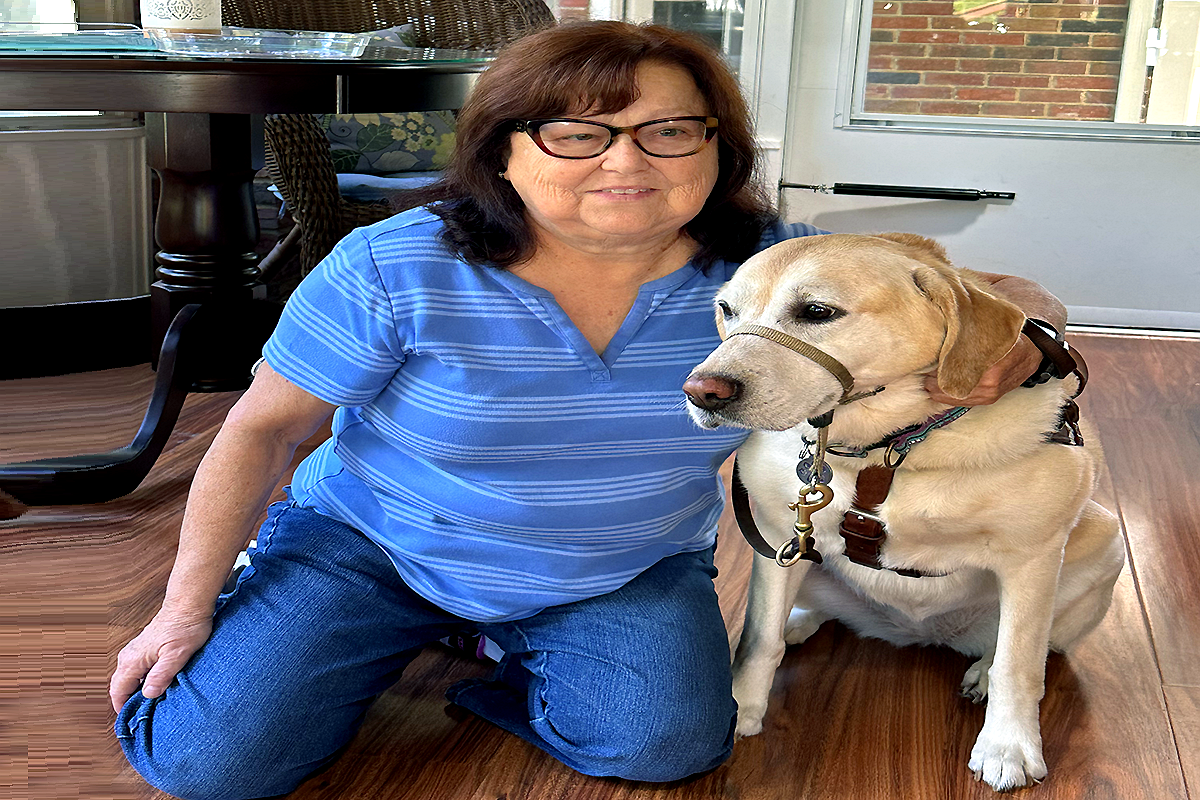Sights for Hope Salutes Four-Legged Heroes of Independence on National Dog Day

On this National Dog Day, Sights for Hope salutes the service dogs who empower people with visual impairments and blindness to live independently. Among these four-legged heroes are Sammie, the yellow Labrador who partners with Sights for Hope Vision Rehabilitation Therapist Dianne Michels, and Felton, the black Labrador companion of Board President Paul Miller.
To commemorate National Dog Day, Sights for Hope offers a few interesting facts about service dogs who help people overcome the challenges of vision loss every day.
1. They are Part of a Long Tradition
While the use of service dogs by people with visual impairments in the United States dates to 1928, the Perkins School for the Blind reports that a first-century mural within Roman ruins depicts dogs guiding people with little or no eyesight.
2. They Have Perfected Disobedience
While most people think of service dogs as models of compliance, one of their most effective skills is known as “intelligent disobedience.” As the term suggests, the dogs are taught not to obey commands when they determine that doing so would put their humans at risk. A typical example would be to refuse to cross a street when a car is coming.
3. Their Humans are Trained Too
People who qualify for a service dog go through their own training program. The nationally-acclaimed Leader Dogs for the Blind organization offers a three-week training program at its headquarters in Michigan. An in-home training option is also available.
4. Much is in a Name
When choosing a name for a potential service dog, care is typically taken to select a name that is one or two syllables and cannot be easily confused with a common command. For example, it would not be a good idea to name a service dog, or any dog for that matter, Neil because it sounds like the command “heel.” This is also why Michels calls her dog Sammie and does not typically use her full name, which is Samantha.
5. They Can Be Party Animals Too
When a service dog is “off harness,” they know that they are not working. They will play, run around, try to get treats, play with their toys, and interact with other dogs.
It is also important to remember that the Americans with Disabilities Act of 1990 dictates that organizations that are open to service animals can ask only two questions about them. The first is, “Is the dog [or animal] a service animal required because of a disability?” Meanwhile, it is illegal to ask the person about their impairment. The second question allowed is, “What work or task has the dog [or animal] been trained to perform?”
National Dog Day has been marked on August 26 since 2004. It was created by renowned animal rescue advocate, conservationist, dog trainer, and author Colleen Paige.
Image: Dianne Michels, in a blue striped shirt, kneeling on a wooden floor next to her service dog, Sammie, a yellow Labrador-Golden Retriever cross who is wearing a harness.